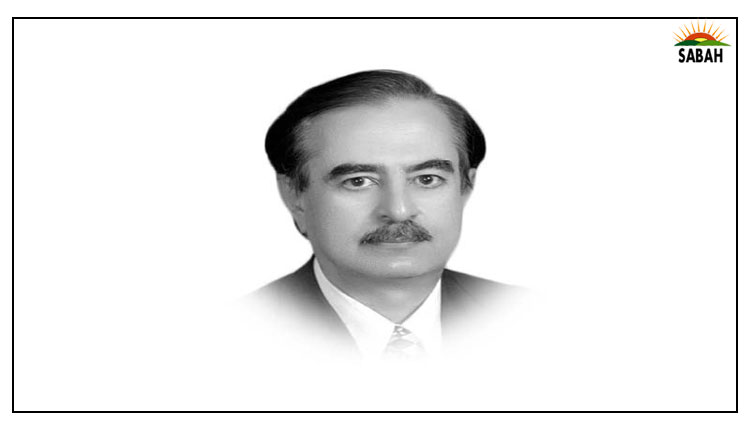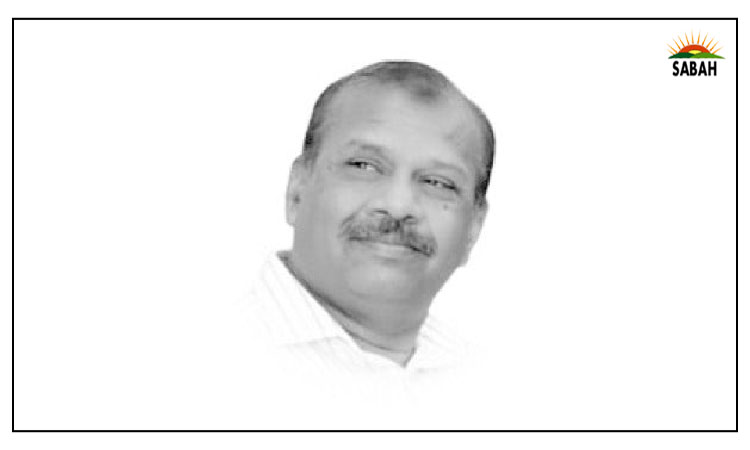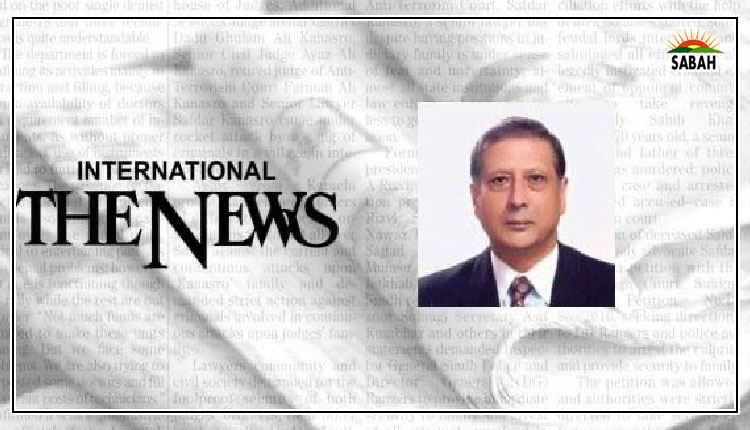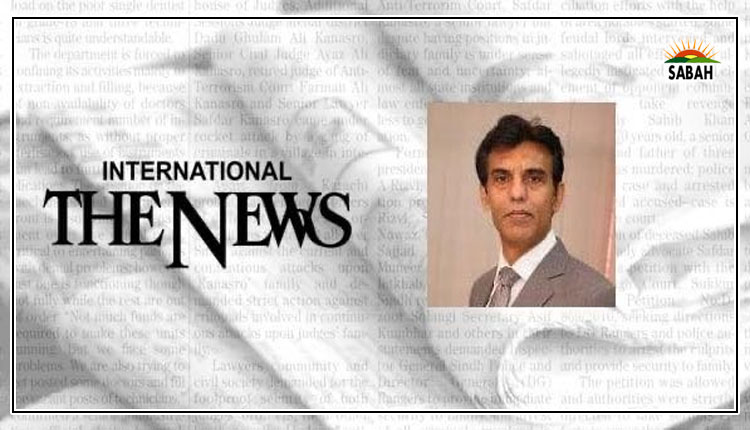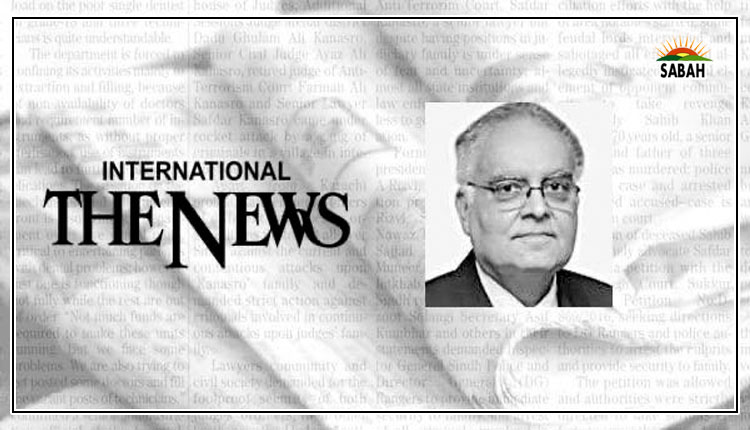To survive and prosper…Dr Akmal Hussain & Dr Khalid Malik
That Pakistan is in a profound economic and political crisis is no longer in dispute. Most observers and economists are united in that opinion. What to do about it is less clear. The Chinese character for risk is closely related to opportunity, which is more accurately defined as a crucial point when something begins to change.
Will it? We hope so. This article is more about what needs to change.
There are two distinct thoughts about the current economic crisis. One: adjust now, stabilize the economy and then restart the growth process. Let us call this the traditional view. This thinking underlines the IMF programme: let the exchange rate be determined by market forces, curtail expenditures, increase taxes and so on. Each time this logic has been followed, the subsequent growth spurt hits the foreign exchange barrier with the under-performing export sector seen as the basic culprit. Technical discussions abound about export subsidies being inefficient, and/or the need to revamp the export sector, especially textiles.
The second approach, less successful of late, is to rely on the largesse of friends — China, UAE and Saudi Arabia. And, in earlier days, the USA. The thinking being that the country can scrape through without major structural changes in the Pakistan economy or in the ability of the ruling elite to maintain their global lifestyles.
The government has tried hard to pursue a mix of the two strategies, but it has become abundantly clear that the IMF option is the only option left.
Will that be enough? Will that lay the base for future prosperity? Will that shift the economy and society in putting people first?
A quick review of successful development experiences, including South Korea and China, highlight some deeper more critical factors than just macroeconomic issues of balanced budgets and higher tax-to-GDP ratios. These include: a determined long-term policy perspective since development is all about transforming society and the economy; enhancing capabilities, by investing in people; and, by recognizing that social policy is as important as economic policy in this transformation.
One, establish (and adequately fund) effective public education and health systems. No country, bar none, has succeeded in developing without a functioning public education system.
In a land with little social protection, pursuing universal health coverage with a focus on the poor is the right step to take now.
There are structural and funding issues which need to be urgently addressed for both subjects. Current income support programmes for instance not only need to be substantially enhanced but have to be conditioned on enhancing capabilities.
Two, fix the agricultural sector. First, tax agricultural income, especially since almost 70 per cent of the land is in the hands of large and medium farmers.
It is a myth (and little evidence) to argue that large farms are more productive than small farms. A cursory look at why East Punjab has done so much better than West Punjab shows that structural changes (land reforms) and incentives (and more educated next generation farmers) are at the heart of the differences.
If putting people first is our defining slogan, then it is time to support small farmers (defined as less than 7.5 acres) which form 78 per cent of farmers and 32 per cent of total farm area. Start by reallocating state land to poor farmers, with strong technical support for seeds, fertilizer, and advice.
Initiate and scale up a Rural Employment Guarantee programme, enshrining the core idea of employment as a basic right. And, through this, provide a necessary injection of purchasing power into the rural economy, especially for the landless and those affected by the floods.
Three, restructure the export sector. Without getting into a long debate about subsidies, set up a five-year transition plan on a subsidy draw-down, with an agreed structural transition and diversification towards high value added, knowledge intensive exports.
But results are likely to take time.
Four, remittances: Imagine a Pakistan economy without any remittances. The system needs to adjust and organize better investment grade products for overseas Pakistanis. Right now, the incentives are mostly about investing in real estate.
Many innovations are possible. Take the example of Ethiopia, a non-oil producer, which set up a $150 billion sovereign wealth fund, seeking investment for state-owned enterprises and assets as the government pushes ahead with its privatization initiatives.
Five, get rid of an open capital account. Countries like China with $3 trillion reserves have not opened their capital accounts. Why has Pakistan kept the capital account open for so long? Open accounts limit domestic policy autonomy and can deeply disrupt domestic production arrangements.
A comprehensive study about trade and financial liberalization for the 2014 Global Human Development Report concluded that opening up benefits developing countries only when their human capabilities are high. Later studies have reconfirmed this essential point. Even in the EU accession process, less advanced countries like Romania and Bulgaria have tried to argue for selective capital controls.
There has been some talk in Pakistan about a one per cent economy. But a deeper concern is about a Pakistani elite, which feels as global as any, able to travel and co-exist in UK, US and Dubai spaces. Indeed, many Pakistani business operators tend to have a business base overseas as well. Even experienced Pakistani economists have tended to consider western practices in looking at current policies, rather than critically examining what has worked in other developing countries and applying those lessons to Pakistan. For a 220 million country we appear to be driven by the needs and values of a few million people at the most.
Six, fiscal space: It goes without saying: eliminate all the special SROs, and the associated giveaways (unearned incomes or rents). The last National Human Development Report (for Pakistan) estimated an annual cost of $70 billion dollars in these legal giveaways to the elites, which contrasts with half that estimated amount for corruption. Just stop!
Rethink the centre-province fiscal arrangements, set checkable development standards for expenditures which may also minimize political largesse, and require provinces to raise their own tax revenues as matching funds.
It could well be, as has been argued elsewhere, that these steps may not be enough and that a deeper fiscal surgery is now required. There is talk of reducing non-combat military expenditures. What needs to be kept in mind in this regard is that only the government in consultation with the nations military has the sovereign right to determine the details regarding the financial operational capability of its forces. Not the IMF. The point to remember here is that the required military expenditure when it is a small percentage of a large fiscal base is less of a problem than a large percentage of a small and fragile fiscal base. Long-term thinking is critical.
Seven, development administration. We have to energize our development efforts. There have been some noteworthy attempts to reform the civil service. But, drawing upon other experiences, particularly China, a first push requires two key actions: one, send your best people to the under-performing tehsils and districts with a performance compact to sharply improve the situation; and second, be razor focused on promotions and career advancement strictly as a function of performance. These were the two essential ingredients in the great Chinese revival, which lifted some 700 million people out of poverty in only four decades.
The above agenda is wide-ranging and perhaps far beyond the capacities of the current administration. But they are necessary. The time has come for serious change.
As the government grapples with the IMF programme, we must start on addressing these deeper concerns. Perhaps it may also be prudent to set up a separate process coordinated by respected institutions and independent experts to bring together key voices from all political parties and civil society, with a view to identify a limited number of transformative actions that can put Pakistan on a different, more prosperous trajectory on a long-term basis. Those proposals can then be debated, and a national consensus formed, regardless of who comes into power in the future.
Courtesy The News



